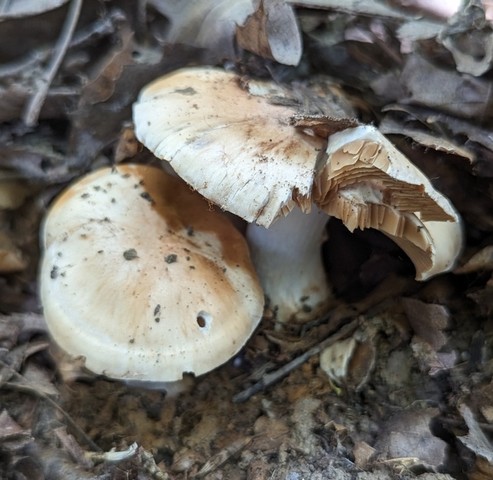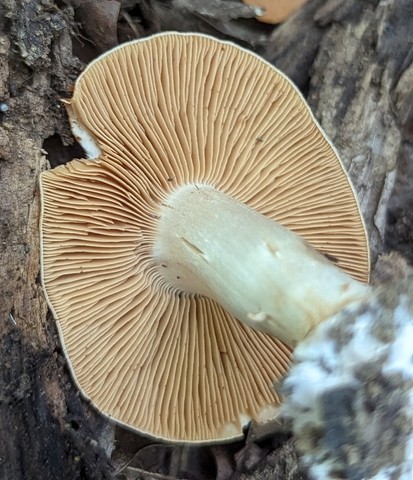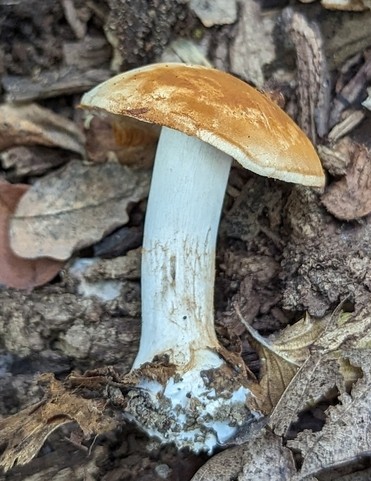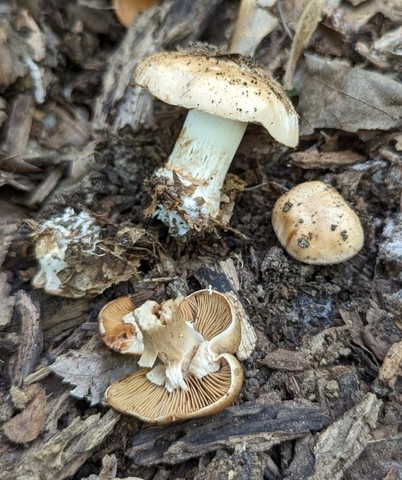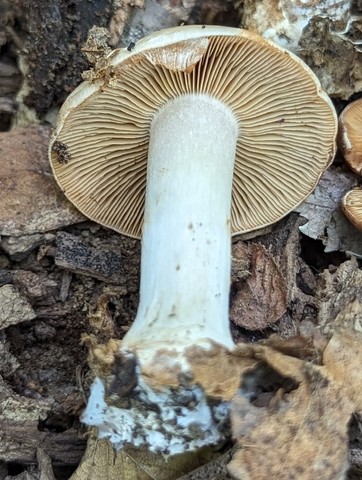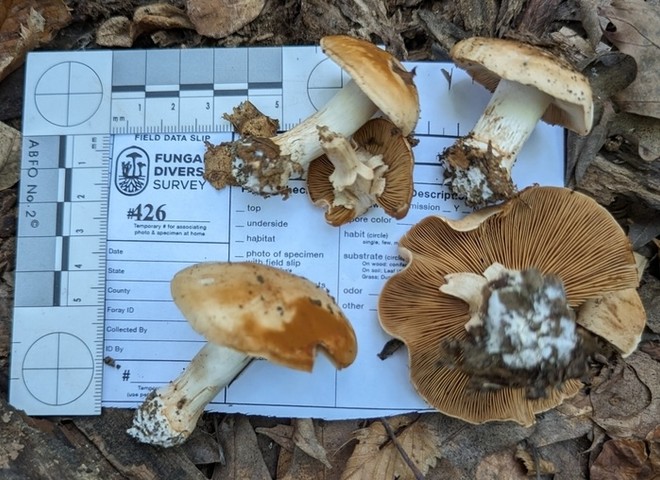Cortinarius squalidus
Life > Fungi > Basidiomycota > Agaricomycotina > Agaricomycetes > Agaricomycetidae > Agaricales > Agaricineae > Cortinariaceae > Cortinarius
Description
Cortinarius squalidus is a mycorrhizal mushroom found in oak-hickory forests, appearing in scattered groups on the ground. It was observed in mid to late September at Indian Cave State Park in eastern Nebraska. The species name squalidus is from the Latin word squalere means “dirty” or filthy,” referring to its overall dull brown appearance. This species lacks bright or vivid colors, giving it a rather plain look compared to many other Cortinarius mushrooms (Smith, 1944).
The cap is 1–3 inches (3–8 cm) wide, convex when young and flattening with age. It is pale cinnamon to dull brown, sometimes with streaks or watery spots, and sticky when moist. The margin may have remnants of a white veil. Gills are pale brown when young and darken with age, closely spaced, and attached to the stem. The stem is 1–2 inches (3–5 cm) long and up to 0.6 inches (1.5 cm) thick, pale and silky with a slightly swollen base. A white cortina (web-like veil) may be present between the cap and stem in young specimens. The spore print is rusty brown.
Observations
September 27th, 2023 Indian Cave State Park

Nickname: Agaricales Alternate ID: 426 Location: 40.26292788428623, -95.5591069533789 Observed at: 2023-09-28T18:18:00.403Z
habitat: Terrestrial (on soil)
growth habit: Gregarious (growing as a group)
Cap: shape: convex (evenly rounded) to parabolic (half-egg) to plane (flat) to umbonate (with bump); texture: smooth to uneven (bumpy) to glabrous (bald) to virgate (streaked) to zonate [1]; surface moisture texture: dry - shiny; margin shape: involute (inrolled) to incurved
Gills: attachment: emarginate to seceding (breaking away) to decurrent to uncinate (with decurrent tooth); breadth: narrow; misc features [2]
Stem: location: central; shape: oblique (angle) to abruptly bulbous to equal to terete (round); texture [3]
Veil: texture: cortinate (cobwebby); ring (annulus): cortinate/fibrillose; pv & annular zone
[1] Tan to brown
[2] Gray brown
[3] White
AAGTCGTAACAAGGTTTCCGTAGGTGAACCTGCGGAAGGATCATTATTGAAATATGGCTGTTGCTGGTTCTCTAGGGAGCATGTGCACGCCTTGTCATCTTTATATCTCCACCTGTGCACCTTTTGTAGACCTTTTAGGTCTATGTTGCTTCATTTACCCGAATGTATGTTAACAGAATGTTGTGCCTGCAAAATATATTTTATACAACTTTCAGCAACGGATCTCTTGGCTCTCGCATCGATGAAGAACGCAGCGAAATGCGATAAGTAATGTGAATTGCAGAATTCAGTGAATCATCGAATCTTTGAACGCACCTTGCGCTCCTTGGTATTCCGAGGAGCATGCCTGTTTGAGTGTCATTAATATATATATCAACCTTCTCTTGTTGAGTTGTTTGGATGTGGGGGTTTGCTGGCCTTTTAAAGGGCTCAGCTCCTCTGAAATGCATTAGCGGAACAAACCTGTTCATTGGCGTGATAACTATCTATGCTATTGAACGTGAGGGGCAGTTCAGCTTTCTAACCGTCCTTGGACAATTTATCATCAAATGTGACCTCAAATCAGGTAGGACTACCCGCTGAACTTAAGView MycoMap DNA Results
References
Smith, A.H. 1944. New and unusual dark-spored agarics from North America. Lloydia. 7(3):194–263. https://doi.org/10.2307/2481521
Created December 15, 2025 at 10:41 AM
